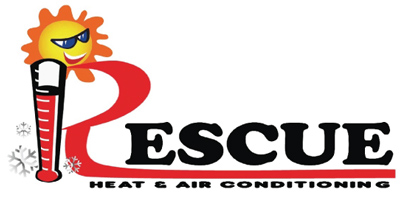
A furnace is almost always a background player for your home, helping keep you warm in the cold winter months. It frequently doesn’t get noticed until something breaks down.
One source could be that your furnace has a cracked heat exchanger. It can potentially be hazardous, so it’s important to familiarize yourself with the evidence of a cracked heat exchanger and what you can do if you are worried that may be the problem.
What Is a Heat Exchanger in a Furnace?
A heat exchanger helps move heat from the combustion chamber of your furnace to the air that flows throughout the air ducts. It usually does this through coils or tubes that heat up the air while serving as a barrier to keep the gasses formed in the combustion chamber, called flue gasses, from leaking out into your home.
Is a Cracked Heat Exchanger Dangerous?
Thanks to its important role, it shouldn't come as a surprise that a cracked heat exchanger can be very dangerous. A damaged heat exchanger can enable dangerous gasses – including carbon monoxide, which can be lethal – to be distributed through your home.
For this reason, never turn on your furnace if you suspect there's a crack in the heat exchanger, as letting it run could make the whole household ill. Contact an HVAC professional immediately if you think your furnace has a cracked heat exchanger that needs repair.
Four Signs of a Cracked Heat Exchanger:
- Furnace shuts off: A crack in your heat exchanger may cause your furnace to turn off.
- Unusual Smells: If the air escaping your furnace has a strong chemical smell, it could be a sign gas is slipping through cracks in your heat exchanger. These byproducts, which will often smell like formaldehyde, are a significant warning sign.
- Carbon monoxide alarm initiates or you feel health problems: If a cracked heat exchanger is relieving carbon monoxide in your home, your carbon monoxide alarm may go off or household members may struggle with signs of carbon monoxide poisoning. Complications include headaches, dizziness, weakness, nausea, vomiting or feeling drowsy. If your alarm goes off or you feel unwell, get out of the home as soon as you can and then call for help.
- Soot: If you spot black sooty buildup on the exterior of your furnace, it’s another sign something could be seriously wrong.
What You Can Do if the Furnace Heat Exchanger is Cracked
If you worry your furnace has a cracked heat exchanger, call a pro well versed in furnace installation Alice right away so they can take a look at your system and, if needed, perform a furnace heat exchanger replacement. Costs will vary depending on the situation, but estimates often hover around $1,000 to $3,000.
Fortunately, the good news is that heat exchangers are regularly protected by the warranty. You should confirm the warranty paperwork on your furnace, since while the warranty won't always cover the entire cost of repairs, it could significantly shrink your bill.
How to Prevent a Cracked Heat Exchanger in Your Home
One of the best ways to minimize the risk of problems in your furnace overall is through consistent furnace maintenance. Furnaces provide the best possible return on investment when they work efficiently. Contacting a skilled professional to check your furnace for broken-down parts, clogs in the air filters and other likely problems can keep you from getting a big bill later on.
It’s also beneficial to review your furnace filters every few months – it’s ideal some filters be swapped out every 90 days or sooner if they are dirty or grimy. While the filters are not part of the heat exchanger itself, the strain of dragging air through a clogged filter makes the entire furnace work more vigorously to complete its job. And the harder your furnace works, the more wear and tear parts like the heat exchanger will endure.
